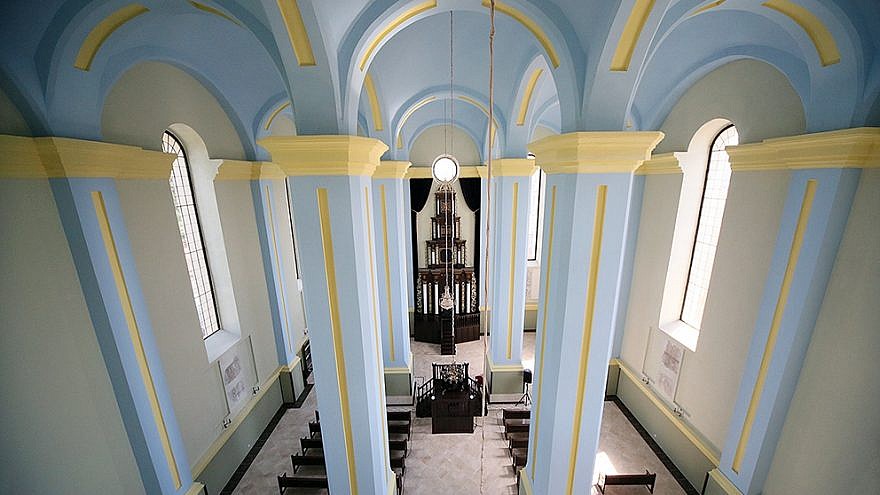The dedication of a Torah scroll at the restored Choral Synagogue took place on Wednesday in the Ukrainian town of Drohobych.
Yaakov Dov Bleich, the chief rabbi of Ukraine, dedicated a new Torah scroll together with the representatives of Jewish communities from across Ukraine, along with local residents and descendants of Jewish families of Drohobych, who arrived from Israel and the United States for the occasion.
The synagogue restoration project, initiated by Felix Vekselberg, took more than seven years to complete and was funded by his son, Viktor Vekselberg.
“Viktor Vekselberg was born and raised in Drohobych and, for many years, has supported the Jewish community. I regret that he himself was not able to attend the celebration, as he has been banned entry into Ukraine for political reasons. I am sure that, given his great efforts in helping develop Drohobych, he has all the merits to be considered for the title of Honorary Citizen of this town,” continued Bleich.
The Choral Synagogue was built in the mid-19th century for one of the biggest and most thriving Jewish communities of Galicia.
According to its current members, Drohobych was home to 17,000 Jews before the Holocaust, which was about half of the town’s population at the time. It is estimated that in 1942 and 1943, Nazis massacred between 11,000 and 14,000 Jews there.
Community elders say that Israel’s sixth prime minister, Menachem Begin, and his wife, Aliza, got married in the Drohobych synagogue in 1936. One of the guests at their wedding was Ze’ev Jabotinsky, leader of Revisionist Zionists and mentor to Begin.

The old synagogue is depicted in the famous painting by Maurycy (Moshe) Gottlieb, “Jews Praying in the Synagogue on Yom Kippur,” which is now housed in the Tel Aviv Museum of Art.
Gottlieb was born in 1856 in Drohobych, then part of the Austrian empire, and later became part of Poland and Western Ukraine.
After World War II, the synagogue was used as a warehouse for textiles and for salt storage. It was later turned into a furniture store, and its annex was used for food storage.
In the 1990s, the building was transferred to the town’s Jewish community, but was looted and set afire. For years, it was dilapidated until restoration work began in 2013 through the efforts of the Vekselbergs.


























